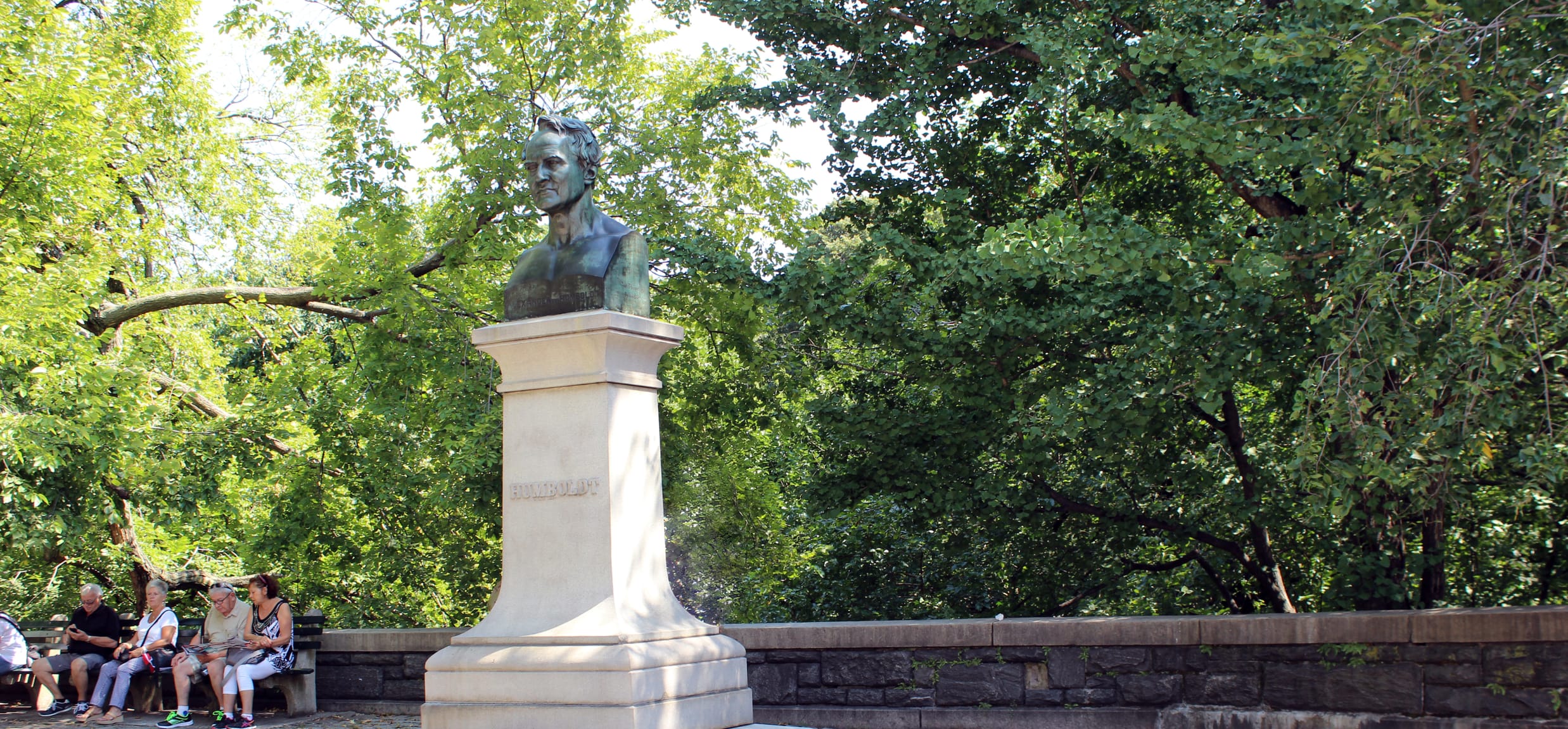Alexander von Humboldt

The monument to German scientist, explorer, and naturalist Alexander von Humboldt (1769–1859) stands at Naturalists' Gate, across from the American Museum of Natural History.
The bust was donated by the Humboldt Memorial Association, a group of German Americans, several of whom had also been involved with the gift of the Johann C.F. von Schiller monument to Central Park in 1859. German sculptor Gustav Bläser referenced Humboldt’s death mask to create the larger-than-life-sized portrait. The memorial was installed in the Park in time for the centenary of Humboldt’s birth in 1869. Like many other monuments donated to the Park at this time, it reflects the desires of European immigrants who sought to see themselves represented in the City’s premier public space, to signal their inclusion in American life.
The unveiling of the monument was one of several events across the City and nation that celebrated the accomplishments of Humboldt, who was one of the most influential figures of the 19th century. A naturalist and explorer, Humboldt traveled across four continents and published more than 36 books on his discoveries and observations. He was the first to write about subjects that would now be categorized as physical geography, climatology, ecology, and oceanography.
Originally Humboldt was placed by Scholars’ Gate, at Central Park South and Fifth Avenue. It was moved in 1981 to its current location across from the American Museum of Natural History, an institution indebted to Humboldt’s intellectual legacy.
The Humboldt bust is one of three monuments to German cultural icons in the Park. Friedrich Schiller and Ludwig van Beethoven are both located on the Mall.
